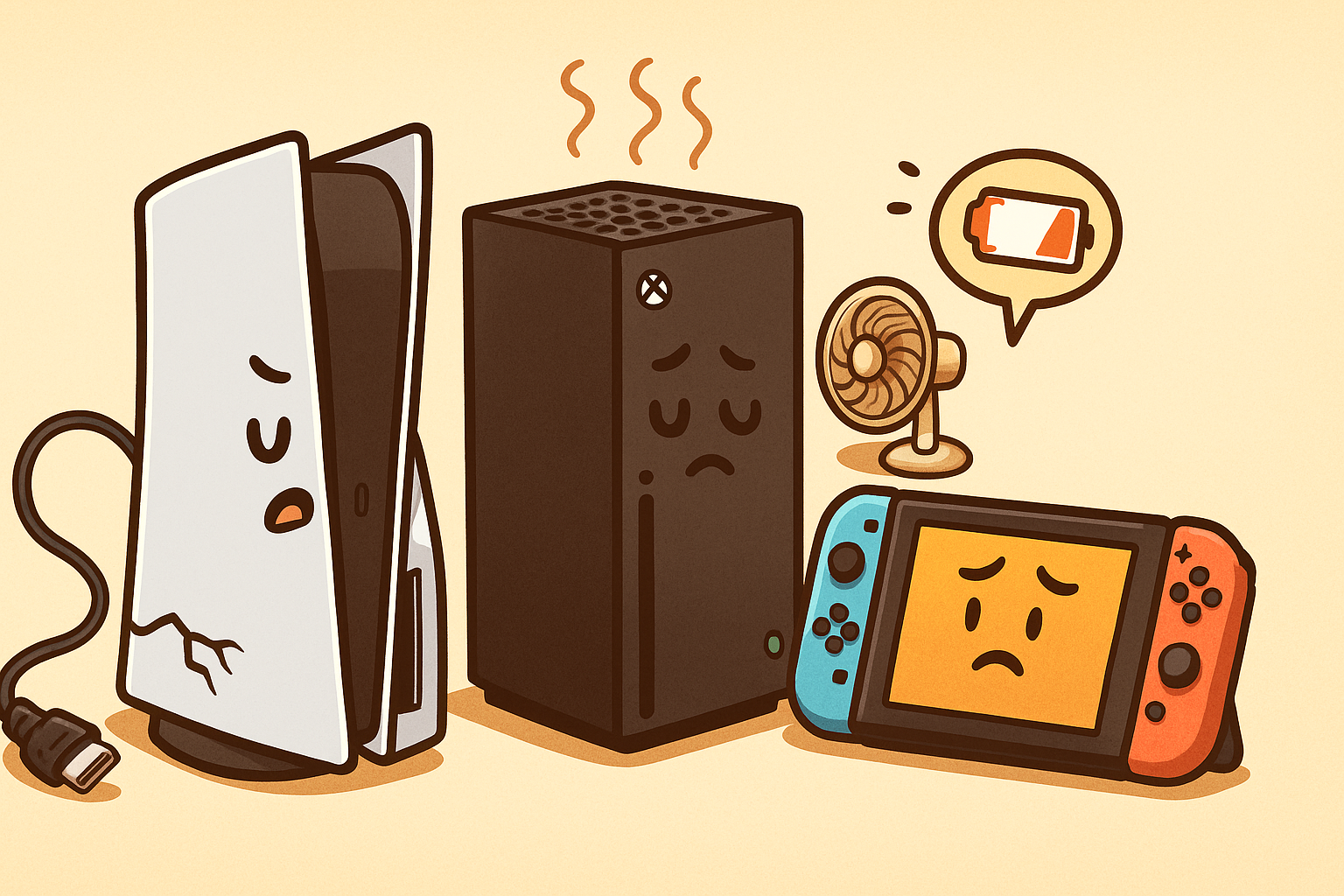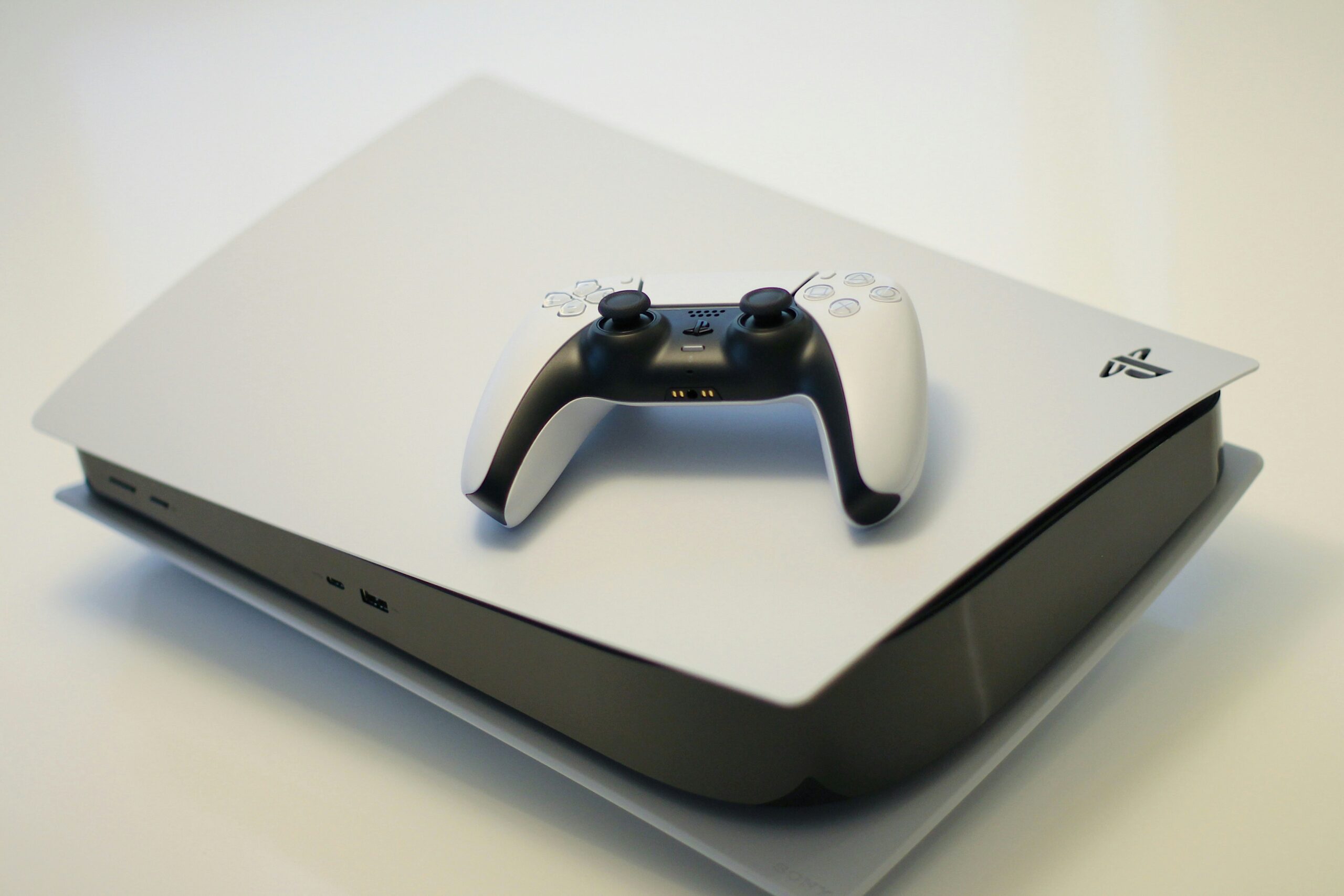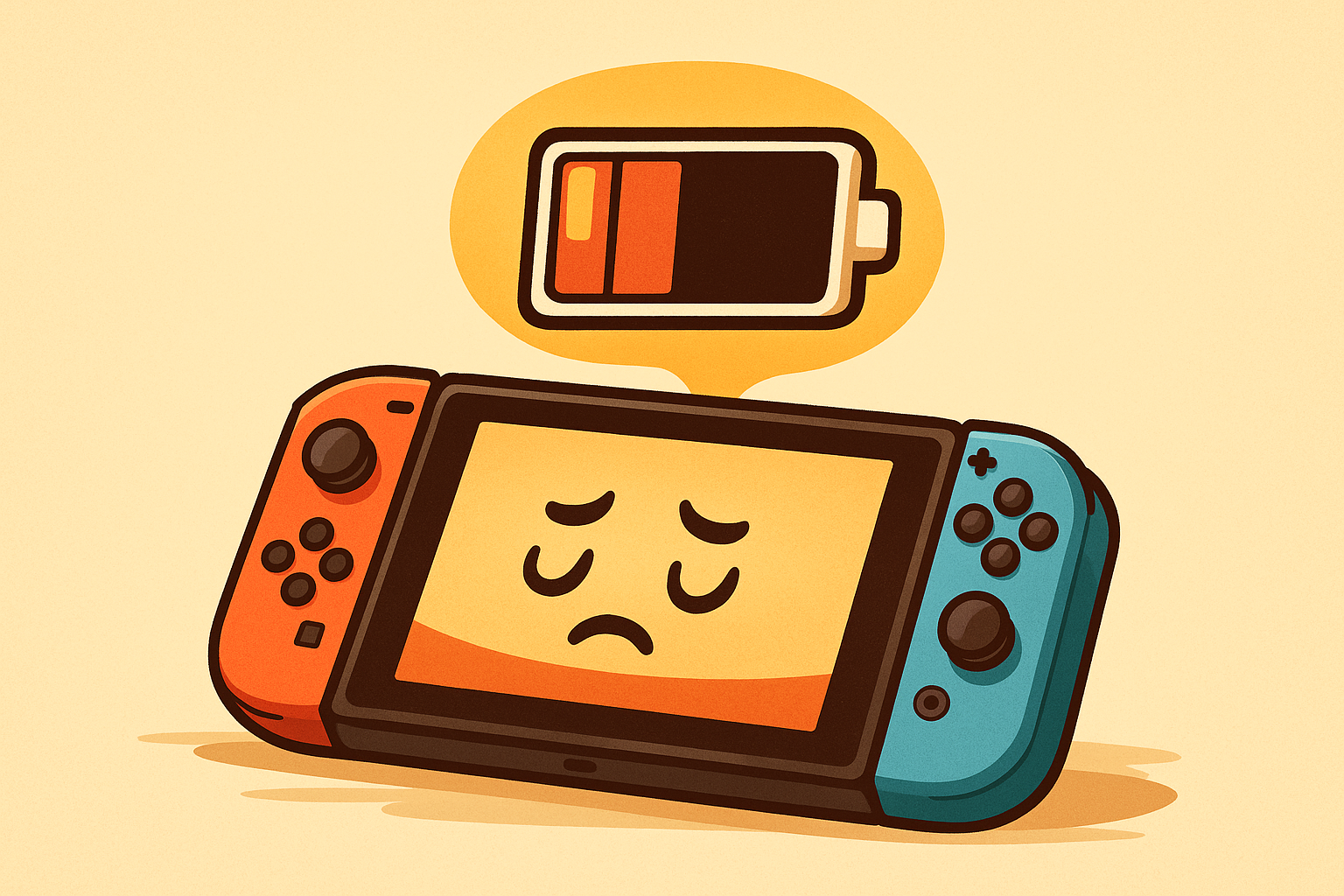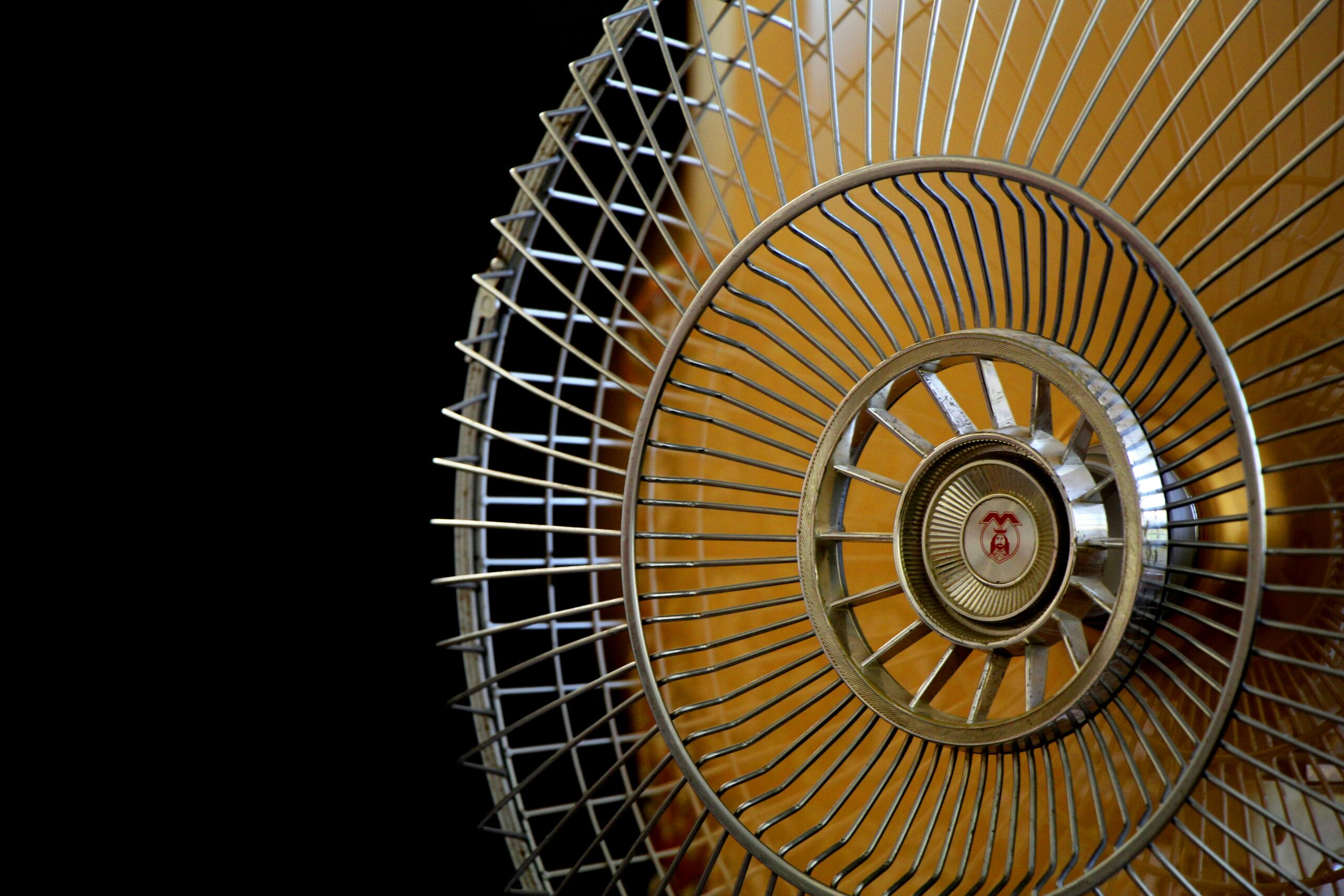

Picture this: You’re all set for a marathon gaming weekend. Snacks? Check. Comfy chair? Check. Suddenly, your console gives you the dreaded black screen of doom. Nooooo! 🎮💥 One minute you’re about to save the universe, the next you’re staring at a $500 question: Do I repair my broken console, or do I buy a new one?
If you’ve ever found yourself in this heartbreaking scenario (and frantically Googling “console won’t turn on”), pull up a chair. We’re about to dive into the ultimate showdown – fixing your beloved console for an average $199 vs. buying a brand-new PS5, Xbox Series X, or Nintendo Switch. And yes, there will be real math (don’t worry, we’ll keep it fun). By the end, you’ll know exactly which option wins for your wallet, your gamer soul, and even your sanity.
Image: photo of a sad gamer looking at a broken console on a desk
Before we jump into console-specific cage matches, let’s set the stage. New gaming consoles aren’t cheap – we’re talking around $700 for a PlayStation 5 or Xbox Series X, and slightly less for a Nintendo Switch. That’s a lot of coin. On the flip side, most common console repairs cost a fraction of that. For example, professional repair services typically charge $199+ to fix a console, versus $600–$800 to replace it. In plain English: fixing things usually costs way less than buying new.
So why do so many of us instinctively start browsing Amazon for a new console the second ours hiccups? Blame it on panic and a sprinkle of gadget fever. New = shiny and guaranteed to work (for now). Repair = “How do I know it’ll work? How long will I be console-less?” and the classic “Is it really worth $200 to fix?”
Let’s answer those with a smile and some hard facts. Ready? Fight!
Fun Fact: According to a totally scientific gamer poll, 87% of people regretted impulse-buying a new console while their old one just stared at them from the shelf. In other words, buyer’s remorse is real, especially when your “dead” console could have been resurrected for cheap. 💸😅
Meet the contender: The mighty PlayStation 5. It’s sleek, it’s powerful, and it sells for about $900 brand new pro version (Standard Edition with a disc drive – the Digital Edition is roughly $200cheaper). That’s if you can find one in stock without doing a ritual dance at Best Buy. Now, what happens when this $700 beast decides to take a nap (aka breaks down)?
Common PS5 Failures: Despite being a beast, the PS5 isn’t indestructible. Maybe your PS5 won’t turn on at all (cue the Blue Light of Death™). Or it keeps overheating and sounding like a jet engine before crashing. Perhaps the HDMI port got yanked accidentally and now you’ve got no picture (one too many rage quits tugging the cable?). Or the classic: disc drive issues – it won’t read your game discs or makes noises like it’s chewing on them. Yikes.
Cost to Buy New vs Fix: Dropping $500 on a new PS5 is one option (plus transferring all your games and saves – more on that headache later). But what would it cost to fix these common issues? Let’s do the math:
Real-world example: Our friend (let’s call him Player 1) was heartbroken when his PS5 refused to turn on one morning. Sony’s out-of-warranty repair quote? Nearly $350 plus shipping – ouch. Instead, he hit up OneUpFix. Diagnosis: a blown power supply and clogged fan. Price? $199 flat – done and dusted. His PS5 was back to life faster than you can say “Press F to pay respects.” Meanwhile, a new PS5 would have been $700 and a painful transfer of all his data. Player 1 saved $500 by choosing repair, and his same trusty console is now running like new. Flawless victory for repair in this round.
Image: screenshot of a PS5 error screen on a TV (e.g. the “repair your storage” error message)
Bonus Round – Data & Convenience: If you replace your PS5, you’ll spend hours re-downloading huge game files (we’re talking Call of Duty-sized downloads here) and praying your saves were in the cloud. If you repair your PS5, you keep everything intact – all your games, save files, custom settings – because it’s the same console coming back to life. No need to redownload 100 GB of Spider-Man or reconfigure your entire system. That convenience? Priceless.
Next up in the ring is Xbox Series X, the green gaming machine. Retail price for a new Series X? About $700 at major retailers, similar to the PS5. It’s another ~$700 hit to the bank account if you go the buy-new route. But do you need to? Let’s examine the Xbox’s weak spots and repair costs.
Common Xbox Series X Issues: The Series X is built like a tank, but even tanks have vulnerabilities. Here are the usual suspects:
Cost to Fix vs New: Buying a new Series X is another ~$700 adventure. But repairs? They’re often even cheaper than PS5 fixes. Why? Xbox parts (like HDMI ports) are pretty available and many issues are straightforward for a console tech. Some real numbers:
Now, let’s talk about Player 2, who had an Xbox Series X known around here as “the mini-fridge” (for its shape) that kept overheating and crashing in the middle of Destiny raids. Tempted by a shiny new console, Player 2 instead tried OneUpFix. Diagnosis: years of dust buildup were clogging the fan, plus old thermal paste (the stuff that helps cool the CPU) had crusted up. We performed the console equivalent of a spa day – full cleaning and refresh. Cost? $169 (in this case). Now it runs quietly for hours. Player 2 avoided spending $700, saving $530, and their same Xbox now plays like day one. They even said the fan hasn’t been this quiet since launch. Not bad for a day’s wait and a couple hundred bucks saved.
What about Xbox’s data and settings? Similar to PS5, your Xbox profiles, game installs, and saves (thanks to cloud sync) carry on when you repair the console. No need to download 50 updates or re-sign-in on a new device. Just plug your rejuvenated Series X back in and pick up where you left off. If you bought a new one, you’d be spending an evening logging in, updating, and redownloading – not very fun.
(Quick side note: If you have an Xbox Series S – the smaller all-digital sibling at ~$399 new – the calculus is a bit different. Repairs on a Series S are similarly priced to the X. So if a fix costs ~$199, that’s still saving you around $200 versus $399 new. Worth it for most issues, but if you find an amazing sale on a Series S, you might debate it. For today though, we’re focusing on the big guy, Series X.)
Finally, in the challenger’s corner: the Nintendo Switch. Smaller price tag, but also smaller issues can drive you insane (Joy-Con drift, anyone?). A brand-new Nintendo Switch will run you about $399.99 for the standard model, or $449.99 for the fancy OLED version. And let’s not forget the Switch Lite at $274.99, but that’s another story. Point is, even the “cheapest” current Nintendo console is a couple hundred bucks new.
Now, the Switch is a different animal – it’s portable, has detachable controllers, and is generally very repair-friendly. Nintendo fans are often torn: “My Switch is acting up. Do I repair it, or upgrade to that shiny OLED model?” Before you Mario-jump to conclusions, consider the common Switch problems and what it takes to fix them.
Common Switch Failures: If you’ve owned a Switch for a while, you might have encountered one of these:
Cost to Fix vs New: Replacing a Switch means $400 out of pocket (or $450 if you’re springing for that OLED upgrade). But many Switch repairs are surprisingly cheap – certainly cheaper than replacing the whole console. Let’s break it down:
Let’s illustrate with Player 3’s story: They had a first-gen Nintendo Switch. After years of Pokémon and Zelda, it developed triple whammy syndrome: both Joy-Cons were drifting, and the Switch’s charging port became finicky (had to wiggle the cable just right – a ritual dance we don’t recommend). She contemplated splurging on a new OLED Switch for $449. But her save data for Animal Crossing (hundreds of hours!) was on the console – and not all of it was backed up to the cloud. If she bought new, she’d lose her island progress unless she somehow fixed the old one to transfer data. Solution: She brought it in for repair. For about $199 total, we fixed the charging port. Now her original Switch is charging perfectly – and all her game progress was exactly where she left it. She saved roughly $250 versus buying the OLED, and avoided the heartbreak of losing her hard-earned game data.
Data concerns: The Switch, unlike the big consoles, doesn’t automatically back up all saves unless you have a Nintendo Switch Online subscription – and even then, some games (looking at you, Animal Crossing and Pokémon) have limited cloud backup. That means if your Switch dies and you replace it, you could lose data. Repairing the console is often the only way to retrieve those saves. So not only does fixing your Switch save money, it could save your 150-hour Zelda save file from vanishing into the ether. That’s a huge consideration for us sentimental gamers.
At this point, you’ve seen the dollar-for-dollar comparisons. Repairing your console is usually significantly cheaper than buying a new one. But wait, there’s more! The decision isn’t just about the direct price tag. Here are some often-overlooked factors that tilt the balance toward repairing that broken console:
Real Stat: During the great console shortage, some repair shops saw 20% more consoles coming in for fixes because people couldn’t buy new. When push comes to shove, gamers find a way to keep playing – and repair was the hero when new stock was MIA. Even now, with consoles readily available, that trend taught us the value of not giving up on our devices so soon.
Drumroll, please! In the showdown of Console Repair vs. Buying New, the champion for most people in most situations is… repair! 🎉
Let’s recap the scoreboard in this epic battle:
Are there times when buying new wins? Honestly, yes – a few. If your console is extremely old and the repair parts are scarce (e.g., fixing a very old launch model might be harder or not worth it). Or if the repair quote comes out nearly as high as a new device (we always tell our customers straight up in those cases – we’re not here to waste your money). And of course, if you were already eyeing an upgrade (maybe you have a vanilla Switch and really want that OLED screen, or a PS5 Slim or Pro if it comes out), then a broken console might be the universe giving you an excuse. But for the vast majority of gamers dealing with an unexpected breakdown, repairing the console is the smart play.
One of our recent customers had a PS5 that showed the dreaded “storage rebuild” error repeatedly and crashed. He was this close to buying a new one, thinking his was a goner. Instead, he gave repair a shot. We found the issue: a failing SSD module. Replaced it and cloned his data. It cost him $250 (a bit higher than our flat rate due to the pricey part) but we got everything working. A new PS5 would’ve been $700 and he’d have started fresh. He literally saved 50% of what he would’ve spent on new, kept all his game data, and was back gaming in two days. He joked, “That’s the best math I’ve done since figuring out damage per second in Dark Souls.”
In the end, the “ultimate showdown” isn’t much of a contest. Repair doesn’t just win on cost – it often wins on convenience, time, and keeping your gaming life seamless. Buying new is like a nuclear option: sure, it solves the problem, but at a high cost and with collateral (your wallet, your time, your saves).
If you’re on the fence about repairing your broken console, hopefully this guide gave you some clarity (and a few laughs). The numbers are on your side with repair. And you’re not alone – countless gamers have been in your shoes, wondering if they should toss their console or give it a second chance. Most are very happy they chose to fix it.
At OneUpFix, we’ve made a business out of saving consoles (and saving gamers money). Our average repair price is $199, and we handle everything from PS5 HDMI surgery to Xbox power transplants and curing Joy-Con drift fever. We do it fast, we do it right, and we do it with a smile – because we’re gamers too, and we get it. We want you back to your games as soon as possible, without breaking the bank.
So, before you impulse-buy that new console online at 2 AM out of frustration, take a deep breath. Consider the repair option. Crunch the numbers – or hey, let us crunch them for you (we gave you the math, after all!). Chances are, you’ll come out way ahead and feel good about reviving your trusty gaming companion.
Game over? Not even close. With a solid repair, your console’s story isn’t ending – it’s just getting started on a new chapter. And that, dear gamers, is the best outcome of this ultimate showdown.
Now, if you’ll excuse me, I have a repaired console waiting and a high score to beat. 😉 Happy gaming, and remember: Don’t rage quit on your console – rescue it!


